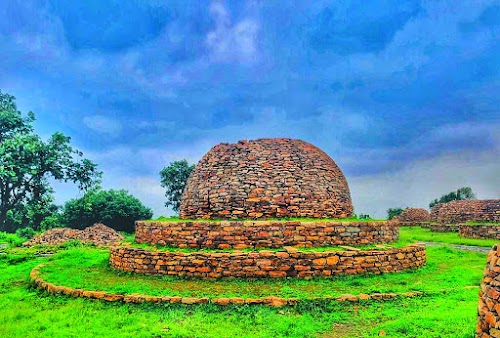
Deur Kothar
Rewa, India
- Examine the Brahmi inscriptions.
- Explore the ancient rock-cut caves.
- Learn about Mauryan and Sunga periods.
- Photography of historical architecture.
- Visit the Buddhist stupas.
Known for:
Description:
Deur Kothar is a significant archaeological site located near Rewa, Madhya Pradesh, India. It's renowned for its ancient rock-cut caves and Buddhist stupas, offering a glimpse into the region's rich historical and religious past. The site features several caves adorned with inscriptions in Brahmi script, providing valuable insights into the Mauryan and Sunga periods. The serene and relatively untouched environment makes it a peaceful escape for history enthusiasts and those seeking a connection with ancient Indian heritage. While not as widely known as some other historical sites, Deur Kothar provides an authentic and intimate experience, allowing visitors to explore the remnants of a bygone era at their own pace. The surrounding landscape adds to the charm, making it a worthwhile destination for those interested in archaeology and Indian history.
History:
Deur Kothar's history dates back to the Mauryan and Sunga periods (3rd century BCE to 1st century BCE), as evidenced by the Brahmi inscriptions found within the caves. The site served as a Buddhist monastic complex, with monks residing and practicing their faith within the rock-cut shelters. The stupas discovered at the site indicate the presence of a thriving Buddhist community. Over time, the site was abandoned and gradually forgotten, succumbing to the elements. It was rediscovered in the late 20th century, and subsequent archaeological excavations have revealed its significance as an important center of early Buddhism in central India. The findings at Deur Kothar have contributed significantly to our understanding of the spread and influence of Buddhism in the region during ancient times.